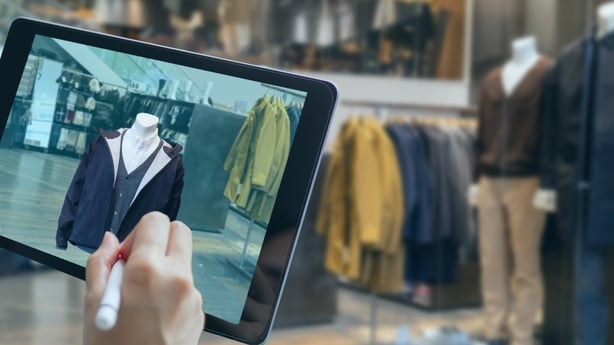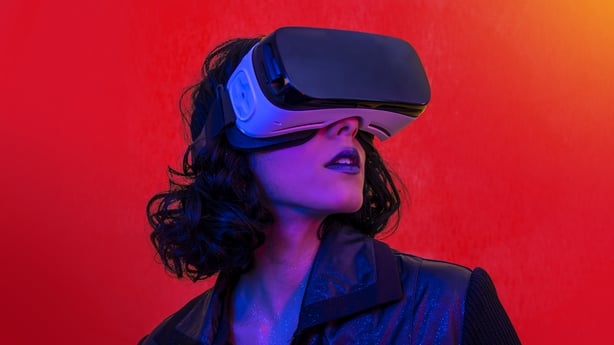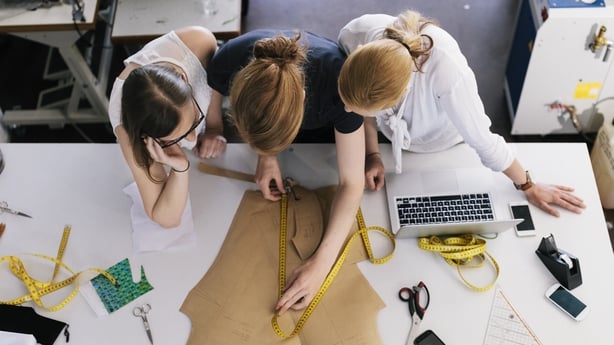The use of artificial intelligence has become commonplace across many industries, so it is only fitting that fashion – an industry most commonly associated with appearances – is showcasing its leap into the future proudly.
In recent years, there has been a supersonic boom in brands embracing the digital world as they add a whole new dimension to how users can experience their garments.
One area we are seeing AI utilised most fiercely is in marketing and advertisements, as brands come up with clever and creative ways to introduce their products to consumers.
you're driving and very casually giant jacquemus bambinos pass over you— pic.twitter.com/aFKr4CKQKt
— andriana シ (@BOTTEGAHOENETA) April 5, 2023
One recent example that broke the internet was a surreal social media campaign by Jacquemus, which portrayed their Bambino bag product as life-size buses, zooming around the streets of Paris.
The "jacquebus" campaign was a huge success for the brand, racking up millions of views and stopping viewers in their tracks mid-scroll. Online searches for the brand and bag saw a huge uptick, and the video remains pinned to the top of the brand's Instagram, a place of prominence for any post.
This reality-bending element of artificial intelligence's creation abilities has captured the minds and imaginations of brands and consumers alike, as interest shifts towards these dreamlike campaigns, a shift from the traditionally glossy advertisements.

Before you get to the marketing stage, though, you need something to sell. Generative AI (like Chat GPT) has made its way into the design process taking place in boardrooms and ateliers the world over.
Designing is a process that takes much trial and error, and AI programs have the power to streamline this by completing a myriad of tasks along the way, eliminating physical steps in the process that would otherwise be time consuming and costly.
It can also come up with prospective design options when given prompts by the user, and utilise a back catalogue of data to do so.
AI generation might not seem like it would be appealing in an industry that so highly values creativity, but there is a distinctive difference between true human creativity and a machine-based production of uniqueness.

Recent concerns about the expansiveness of AI show that people are wary of the idea that it may become a step-in for human inventiveness.
Aileen Carville, founder of SKMMP –an enterprise which provides virtual AI showrooms to brands to digitise their collections to sell to buyers remotely, as well as ASSET HAUS, a WEB3 proof of origin portfolio management company – explains that while there may be a perception that AI is "taking over" creative roles in some way, it actually allows for the human element of the team to focus even more on the creative exploration, as AI can save time and costs that might have gone elsewhere.
She nods to G-Star's recent denim collection as an example of this. The premium jeans brand utilised AI to create 12 unique designs, bringing one to fruition in a stunning display of physical garment production (the couture piece is on display at a G-Star Raw store in Amsterdam for public viewing). The team worked off the image produced by the generative intelligence to cultivate the garment.
"There are a lot of designers starting to look at how they can create a collection by looking at a final outcome image and working backwards through the process from there, using prompts either from fashion stills, or by using their own data sets of their own archive material," Aileen explains.
This is the original AI design made in Midjourney which inspired the AI Denim Cape. pic.twitter.com/FiYqKWiQYH
— G-StarRAW (@GStarRAW) March 31, 2023
Aileen reports that brands are experimenting with two key things: looking at ideation for their concepts and streamlining the decision making processes.
"AI can help produce a developed concept. That concept then goes to the creative pattern cutters which moves the process along to the sample stage. This takes chunks of time out, so you can really flesh out various aspects, volume, embellishment... all these things can be explored at an earlier stage which is a key benefit for the design team," she says.
Brands which mass produce pieces may also benefit from a sprinkle of AI generated design when it comes to sales. This isn't too new of a concept - back in 2017, German fashion marketplace Zalando teamed up with Google for a project called Muze, which trained machine intelligence to predict what kind of fashion people might like and to create designs to match.
The result? 40,424 fashion designs created within the first month.
The feeling when you wake up fully recharged🔋 pic.twitter.com/GTx2zhppe4
— lil miquela (@lilmiquela) October 15, 2022
Where there are clothes to be bought, there are models and influencers to sell them - a key part of any brand's campaign image. There are already "digital influencers" hard at work on our social media feeds like Lil Miquela and Shudu.
These avatars work just as regular influencers do, selling real-world products to their millions of followers for brands such as Prada, Dior, and Gucci.
The rise of digital models has been a contentious issue for a number of years. On the one hand, it offers the opportunity for better inclusivity within markets that lack representation, while on the other hand, there is an argument that digital models have the propensity to remove work from real models and further perpetuate core issues of the industry - the negative effects on the general public of unrealistic body image, underrepresentation for minorities and more.
In March, Levis, famous for their well-fitting jeans, faced backlash when they shared that they would begin using artificial intelligence to generate models of more diverse body types and skin tones to increase diversity across their campaigns. The immediate complaint they faced from the public was the query 'why not just use real models from those minorities?'

Aileen says that while Levi's may have gotten a rough reception to their idea, AI can work towards elevating inclusivity for real models in marginalised markets.
"As markets grow and brands are global, they become so global that they need to become niche again to local markets. The approach to Levi's project of using generated models was a way to really niche down into markets to illustrate and portray the collection using more culturally relevant and appropriate silhouettes and faces that are representative of the local territories and populations."
Touching on the backlash, she says it is more than understandable: "I think people viewed and felt that those models from those populations had not already had their moment as models in real life, and that maybe AI was going to really side-step them in some way.
"There are so many beautiful humans that exist in the world in these niche markets that Levi's was hoping to appeal to and converse with through this campaign, but unfortunately it was felt that they were denying these more native or indigenous representatives within these minorities an opportunity. That's where the backlash happened. It has opened a huge argument over the replacement of models and the introduction of synthetic Ai generated models."
📅 J-1 avant l'ouverture de #PalaisAugmenté 3 ! ⁰
— L'Oréal en France (@lorealfrance) June 22, 2023
Du 23 au 25 juin, L'Oréal Groupe - mécène de cet événement - se joint au festival et donne carte blanche à 4 artistes qui explorent les différentes facettes du futur de la #Beauté. ⁰
Rendez-vous au Grand Palais Ephémère ! pic.twitter.com/WqSgGmuieK
All is not lost for AI in the world of modelling, as its powers of conceptualisation can help identify where brands are falling down when it comes to representation across their campaigns.
"AI is fantastic in terms of looking at representation, but it means that when you go to cast an actual campaign, you already understand the type of model - a real model - that you want to try to cast in these markets, or where models may not be available whatever the reason may be, AI models may then fit in and have a role to play."
The AI transformation of the fashion industry is ongoing, and Aileen notes that when it comes down to it, it is ultimately a tool to spurn on human efficiency. "Humans employ AI, it's not the other way around. It is no threat to creativity. It is freeing up resources and time."
The views expressed here are those of the author and do not represent or reflect the views of RTÉ.


